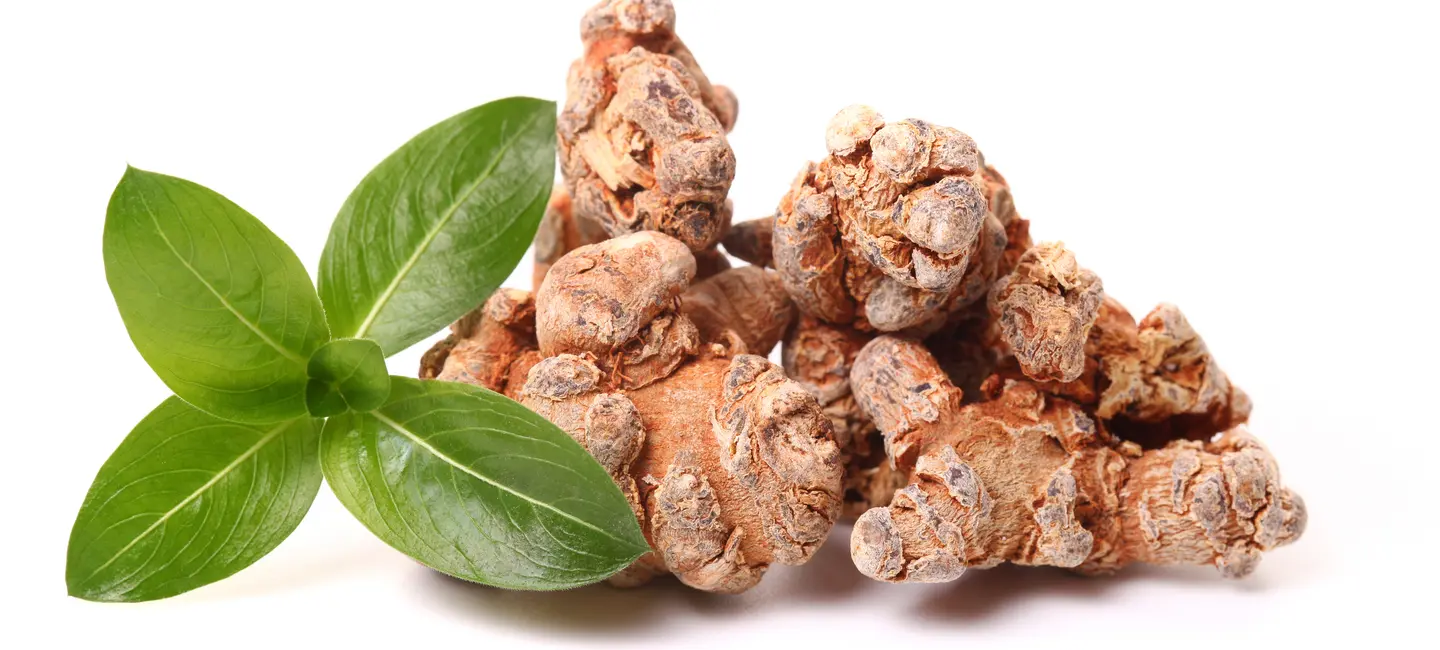
Panax notoginseng is a plant that grows in the mountains in Southwest China. Its root is sometimes used as medicine once it has grown for 3-5 years.
Panax notoginseng might relax blood vessels, which might improve blood flow and reduce blood pressure. Some of the chemicals in Panax notoginseng might also reduce swelling and protect the heart.
People use Panax notoginseng for chest pain, stroke, heart attack, bleeding, high blood pressure, and many other conditions, but there is no good scientific evidence to support these uses.
Don't confuse Panax notoginseng with other plants with similar names, including Panax ginseng and American ginseng. These are not the same.
Is It Effective?
NatMed Pro rates effectiveness based on scientific evidence according to the following scale: Effective, Likely Effective, Possibly Effective, Possibly Ineffective, Likely Ineffective, Ineffective, and Insufficient Evidence to Rate.
- Chest pain (angina). Taking Panax notoginseng by mouth or by IV might reduce chest pain. But research evaluating this has been low quality, so it's not clear how well it works. IV products can only be given by a healthcare provider.
- Bleeding within the skull (intracranial hemorrhage). Taking Panax notoginseng by IV might improve recovery and reduce the risk of death in people that have had bleeding in the brain. But research evaluating this has been low quality, so it's not clear how well it works. IV products can only be given by a healthcare provider.
- Stroke. Taking Panax notoginseng by mouth or by IV might improve recovery after a stroke. But research evaluating this has been low quality, so it's not clear how well it works. IV products can only be given by a healthcare provider.
- Heart attack. Taking Panax notoginseng by mouth doesn't seem to prevent heart attacks in people with heart disease who are using conventional medications for heart disease.
There is interest in using Panax notoginseng for a number of other purposes, but there isn't enough reliable information to say whether it might be helpful.
Is it Safe?
When taken by mouth: Panax notoginseng is possibly safe when used for up to 6 weeks. It's usually well-tolerated. Side effects might include dry mouth, flushed skin, insomnia, nausea, and rash.
When given in the rectum: There isn't enough reliable information to know if Panax notoginseng is safe or what the side effects might be.
Special Precautions & Warnings:
Pregnancy and breast-feeding: Panax notoginseng is likely unsafe when taken by mouth while pregnant or breast-feeding. One of the chemicals in Panax notoginseng has caused birth defects in animals. Avoid use.
Hormone-sensitive conditions such as breast cancer, uterine cancer, ovarian cancer, endometriosis, or uterine fibroids: Panax notoginseng might act like estrogen. If you have any condition that might be made worse by exposure to estrogen, don't use Panax notoginseng.
Aspirin
Interaction Rating=Moderate Be cautious with this combination.
Taking Panax notoginseng with aspirin might increase how much aspirin and Panax notoginseng is in the blood. This might increase the side effects of both aspirin and Panax notoginseng.
Caffeine
Interaction Rating=Moderate Be cautious with this combination.
Caffeine is changed and broken down by the liver. Panax notoginseng might increase how quickly the liver breaks down caffeine. Taking Panax notoginseng along with caffeine might decrease the effects of caffeine.
Medications changed by the liver (Cytochrome P450 1A2 (CYP1A2) substrates)
Interaction Rating=Moderate Be cautious with this combination.
Some medications are changed and broken down by the liver. Panax notoginseng might change how quickly the liver breaks down these medications. This could change the effects and side effects of these medications.
Warfarin (Coumadin)
Interaction Rating=Moderate Be cautious with this combination.
Warfarin is used to slow blood clotting. Panax notoginseng might increase the effects of warfarin. Taking Panax notoginseng along with warfarin might increase the chances of bruising and bleeding. Be sure to have your blood checked regularly. The dose of your warfarin might need to be changed.
There are no known interactions with herbs and supplements.
There are no known interactions with foods.
Panax notoginseng has most often been used by adults in doses of 100-400 mg by mouth 1-3 times daily for up to 6 weeks. Speak with a healthcare provider to find out what dose might be best for a specific condition.
Aralia quinquefolia var. notoginseng, Chai-Jen-Shen, Field Seven, Noto-Gin, Notoginseng, Panax notoginseng, Panax Notoginseng Radix, Panax pseudoginseng var. notoginseng Radix Notoginseng, Samch'il, Sanchitongtshu, San Qi, San Qui, San-Qi Ginseng, Sanchi, Sanchi Ginseng, Sanchitongtshu, Sanqi, Sanqi Powder, Sanshichi, Three Seven, Tian Qi, Tian San Qi, Tienchi, Tienchi Ginseng.
Information on this website is for informational use only and is not intended to replace professional medical advice, diagnosis, or treatment. While evidence-based, it is not guaranteed to be error-free and is not intended to meet any particular user’s needs or requirements or to cover all possible uses, safety concerns, interactions, outcomes, or adverse effects. Always check with your doctor or other medical professional before making healthcare decisions (including taking any medication) and do not delay or disregard seeking medical advice or treatment based on any information displayed on this website.
© TRC Healthcare 2024. All rights reserved. Use and/or distribution is permitted only pursuant to a valid license or other permission from TRC Healthcare.
